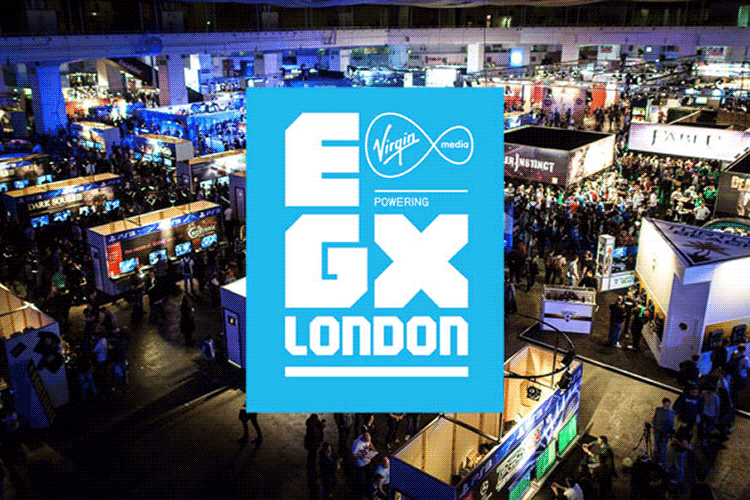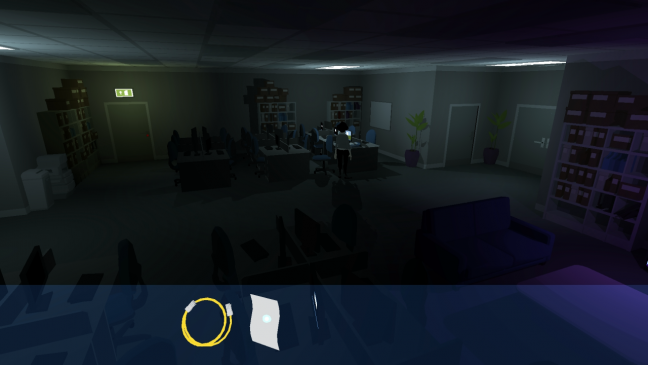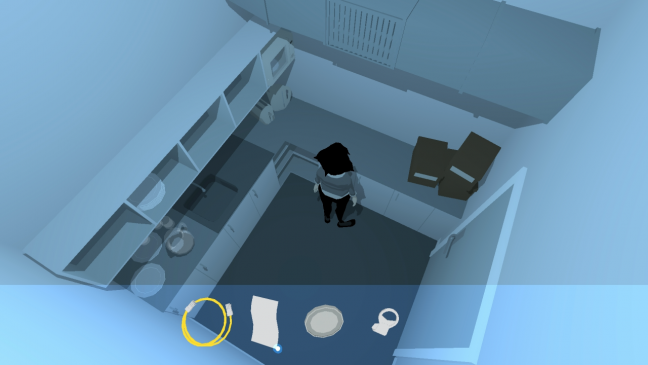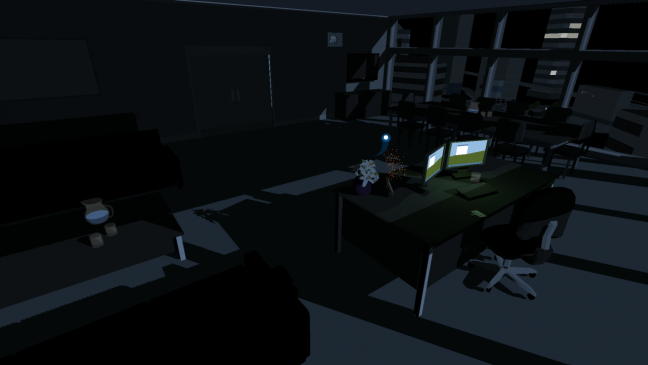The last few months have been pretty hectic, culminating last week with a little demo of Toryansé being shown at EGX London as part of The Leftfield Collection. It was the first time the game had been out in pubic in any kind of playable form (first time in a while I’d been out in public!) and there were reportedly 75,000 people in attendance…
Every now and then I find it really helpful to have a concrete deadline to work to, when working on my own I find it’s sometimes very easy to get obsessed with trivial things (“I need to get the lighting right on this door-handle!!”) and lose sight of the overall direction of a project, without a real sense of urgency, months can go by without much real definable progress being made and this, in turn can be pretty demotivating. So I figured the submission cut-off for Leftfield would be a good target to try and get a small playable build together. In the end it wasn’t quite playable in time, but I submitted a few screenshots and a short video at the last minute anyway, on the evening of the deadline, fully assuming I wouldn’t hear back. Then I heard back, and they wanted me to show my demo in a few weeks… There’s that sense of urgency!
The weeks between getting accepted and actually arriving at the venue with a USB stick in my hand passed by in a blurry instant, I scaled back a couple of times and in the end just focussed on getting a few rooms finished to a decent standard. I was still keen to include a couple of the different mechanics I’m implementing in Toryansé, specifically the speech/thought bubbles and the direct interaction between the cursor and the environment. It would have been nice to have a bit more variety in the environments as well, the start is necessarily gloomy and dark to provide a counterpoint to some of the more colourful and fantastical areas that follow, but I was very aware of spending time on content that people might end up not seeing. Point-and-click adventure is an odd genre to be presenting at a noisy convention centre and asking people to spend much more than ten minutes concentrating probably wouldn’t have worked so well.
The first morning was an absolute nightmare, on cursory inspection everything was working well, I’d fixed up a few bits-and-bobs on a Macbook in the hotel the night before and my concern that a build wouldn’t run on the show PCs, at first, seemed unfounded. It wasn’t until a couple of people started playing and progressing that I realized I had an issue; collected items were stacking on top of each other in the inventory instead of laying out in a nice ordered row, their hitboxes were overlapping making it almost impossible to select anything and therefore to properly play the demo. After much apologising and much scrambling around I managed to work out that the arrays that keep track of the collected objects were not being written to disk, the folders were all being created, just not the .txt file! Four or five builds later and having still not fixed the issue, I eventually managed to work around it by laying out the inventory items in advance. They wouldn’t organize themselves to match the order they were collected in, and it only worked because the number of items in the demo all fitted in the inventory bar at the same time, but at least people were now able to play the demo all the way though to the end!
After that, things went pretty smoothly. It was such an eye-opening experience watching hundreds of different people playing the demo, things that I’d thought I’d made too obvious were completely flummoxing folk, and they were making connections instantly where I’d worried I’d been a bit vague. It was incredibly useful as well, to be able to go back to the hotel in the evening, make a few subtle changes and the following day have hundreds of new players to test them out. On the first day, I’d say about 80% of people struggled with area in the screenshot below, the idea is that you spin the chair round with the cursor to move the card on the desk, I’d hoped that by having spinning chairs in the first area that people would instinctively do the same again, but they seemed to completely miss this one.
For the second day I placed a small yellow post-it note on the back of it, problem pretty much solved! It was just enough to draw attention to the right spot and it still left enough ambiguity that players still seemed to feel like they’d found it themselves! Having this kind of access to so many players has been so incredibly useful, and not something I ever really thought would be available to me, I’m already looking into applying to do something similar next year.
As well as meeting all the lovely players it was a great way of meeting loads of other developers too, all making super diverse and interesting things: @VariableState / @PolClarissou / @alightinchorus / @bryangale / @Haze______ / @BertramFiddle / @juhog / @untamegames / @Ungapants / @ChucklefishLTD / @NFTS_Games / @StitchGames
Also a big giant thank you to David and Eli for all their hard work organizing!





Send me a build!
Still not quite ready for sending out yet I’m afraid Pete! Hopefully have a more stable, slightly more substantial demo ready in the new year!
Great to the something new from this game and especially from the puzzle design!
I was wondering whether the player would be controlling the woman directly or change her environment so she would react. It seems you are using both? That would be the problem for me with the chair and card scene. Why spinning a chair instead of taking the card directly? Or is it not obvious that you need the card and playing with the room itself is a way to find new things or find out what could be usefull?
It’ll be a little of both, the concept is that the player takes on the role of the cursor, as a sort of guiding spirit, you can draw attention to areas and objects and you can interact with the environment a little, but you can’t pick things up. In the scene above, the character can see into the other room but can’t physically get through, it’s a little more clear in the demo, there’s an introductory shot of the character peering through the fan, the camera then moves away leaving her behind, revealing the rest of the room. The puzzle becomes about physically using the environment and various props to get the card into a position the character can reach.
A lot of the time the game will play like a pretty traditional point & click, you click on the floor or an item, the character walks over etc. But I’m hoping this setup will give me some more options for making different kinds of puzzles, and possibly contextualize some of the dissonance you sometimes get in adventure games. The main character is separate to you from the start, so if she refuses to do something you want it’s because she chooses not to rather than a limitation of the game.
Still working on getting these ideas across though! I’m hoping it wont be quite so confusing once you actually get to play!
It’s not confusing at all, just screenshots aren’t enough to understand. Actually I was hoping it would be that direction. I think it is important for adventure games to accept the distance between the player and the main character instead of trying to fight it.
Given the screenhots and videos I get the feeling as the player I observe and accompany the woman, but I think it is important that the player does not believe it is part of the puzzle to tell the main character that X is important before she will interact with X respectively allows the player to interact with X. Because I think it is still a limitation of the game or let’s say the story of the game, if she refused to do something, it is important that the player doesn’t get the feeling he is just asking in the wrong way. The limitation itself is not the problem, but not enough reasons to justify that limitation would be.
I think this is quite often an issue, with adventure games especially! While watching people play the demo, the most stressful/frustrating part was when I could tell a player had essentially solved the puzzle in their head and knew what they wanted to happen, but couldn’t quite work out how to get there! Like you say, that scenario where you know the question but can’t find the right way to ask!
Different people have such a wide range of responses as well, elements that one person finds obvious another will overlook completely!
Wherever possible I’ll have a little thought bubble response to illustrate why something isn’t working, as opposed to just a generic “that doesn’t seem to work” and also multiple ways to solve certain puzzles in an effort to address some of this.
Hopefully get out to another convention next year too, nothing beats getting hundreds of people to play your game in front of you to see where you’re going wrong! 😀
Lovely to meet you at EGX, sir. Shame on me for not posting a little something on your blog sooner. Your wonderful game was undeniably a highlight. Fingers crossed a chance presents itself for our paths to cross again before too long. All the very best!
Thanks for the kind words Jonathan! Great meeting you too, very much looking forward to seeing more of Virginia as well! Will hopefully make it out of the house again at some stage next year! 😐